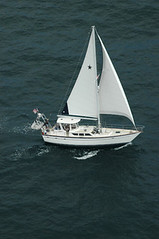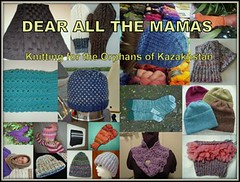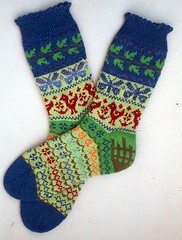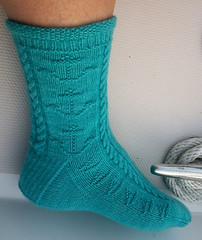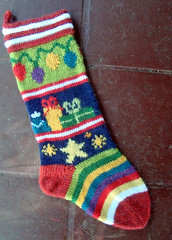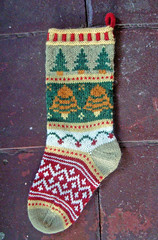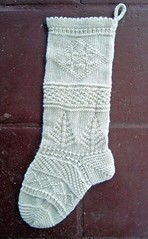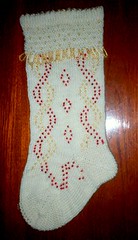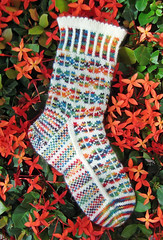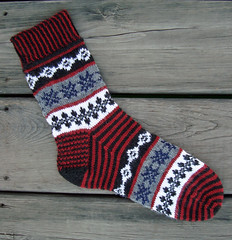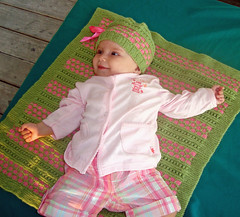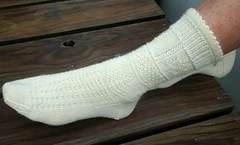
Friday, March 26, 2010
Look! Civilization! Bocas Del Toro Panama
 We've been enjoying civilization again and I thought I'd share with you where we've been over the last 3 weeks. Yesterday, we paid our $60 for permission to leave the country of Panama (zarpe, immigration, port captain, agent fee) so we are committed to leaving - and losing internet access. We filled up with diesel fuel this morning, the freezer & fridge are full of fresh food and now we are just waiting for the final paperwork. So, I thought I'd do a little blogging while I can.
We've been enjoying civilization again and I thought I'd share with you where we've been over the last 3 weeks. Yesterday, we paid our $60 for permission to leave the country of Panama (zarpe, immigration, port captain, agent fee) so we are committed to leaving - and losing internet access. We filled up with diesel fuel this morning, the freezer & fridge are full of fresh food and now we are just waiting for the final paperwork. So, I thought I'd do a little blogging while I can.
Bocas Del Toro is another comarca (state) within Panama on the Caribbean side bordering with Costa Rica and is rich in jungle islands. We love it! Some folks call the town of Bocas on the island of Colon "Velcro" because it is so easy to get stuck here and stay forever. Young backpackers have been aware of this sweet spot for many years and it has only been in the last few years that more people have noticed.
Why is it so popular? I guess it's because Bocas offers everything; a town with lots of well-stocked stores, wonderful small and inexpensive restaurants, funky bars, hostels, and hotels. Then there are the many smaller islands with beautiful beaches, green and flowering plants everywhere and warm water and weather too. The waterfront of Bocas Town i
 s lined with buildings which all extend out over the calm water protected by outside reefs. The restaurants and bars are outdoors for the most part which lets the breeze flow thru - and allows you to people watch too. What people? All the folks taking water taxis to the other islands, other cruisers in their dinghies, or tourists going out scuba diving. This photo is of our favorite place - Lili's Cafe. Great food! Plus, they have a special floating dock at
s lined with buildings which all extend out over the calm water protected by outside reefs. The restaurants and bars are outdoors for the most part which lets the breeze flow thru - and allows you to people watch too. What people? All the folks taking water taxis to the other islands, other cruisers in their dinghies, or tourists going out scuba diving. This photo is of our favorite place - Lili's Cafe. Great food! Plus, they have a special floating dock at  the end of this structure just for us cruisers - free.
the end of this structure just for us cruisers - free.Thanks to a good WiFi signal from the Calypso Cantina in the Bocas Marina, I've been able to catch up on the knittin
 g scene - and to post a new knit 7x7" square to the Holiday Mystery Gifts Yahoo Group. This one has just knits and purls - so easy and it is reversible.
g scene - and to post a new knit 7x7" square to the Holiday Mystery Gifts Yahoo Group. This one has just knits and purls - so easy and it is reversible.So besides a whole lotta knitting, eating, and socializing we also explored a couple of interesting places on this island. My favorite was the Finca Los Monos (Monkey Farm) which is a private botanical garden. The owner, Lin, guided us through her hilly 11-acres palms, heliconias, orchids, and much m
 ore.
ore.Check out this GIANT bizarre flower called a Etlingera Elatior Red. It's "petals" felt like heavy plastic or wax. Yep, that's Jonesy in the background waiting to move on and go see the howler monkeys, which we did see later, plus some beautiful Montezuma Oropend. No photos, they were sighted thru binos.

This is the lily pond where the frogs and crocs live. We didn't see any that day and we were not there at the right time of day (night and early morning) to see the lilies blooming, but it was still pretty.

Now this is a type of banana. Yep, a pink banana which grows upside down (when compared to normal bananas). Because of this position, when it gets ripe it self-peels. The bananas, which are the seed pods for this plant, then c
 an open up and disperse the seeds. Wait!! We have self-peeling bananas on the boat! See? When we sail through rough seas, our bananas just peel themselves. But they aren't the special pink color - although we have eaten some delicious tiny red bananas.
an open up and disperse the seeds. Wait!! We have self-peeling bananas on the boat! See? When we sail through rough seas, our bananas just peel themselves. But they aren't the special pink color - although we have eaten some delicious tiny red bananas.And speaking of bananas...here's how we buy them in Bocas del Toro. The farmer pulls his canoe up to our boat (Jonesy was in the dinghy at the time getting ready to go to shore) and we buy a whole stalk at a time.
 See the bananas in the dinghy? Those were $2.50 total. Once they started ripening, they were delicious! This little type of banana is firm and sweet. Unfortunately, they tend to ripen all at the same time - which is good for our boat neighbors as they all got "hands" of ripe bananas later.
See the bananas in the dinghy? Those were $2.50 total. Once they started ripening, they were delicious! This little type of banana is firm and sweet. Unfortunately, they tend to ripen all at the same time - which is good for our boat neighbors as they all got "hands" of ripe bananas later.
Anyway, enough about bananas. Another field trip we took was a hike from the Bocas Marina over to a butterfly farm. Along the way we came across this big tree covered with "houseplants". It sure must have been there for a l
 ong time. The butterfly farm was interesting, but the only photo I could get was of the teensy tiny frogs in a special terrarium. These little guys are only about as big as my index fingernail. What are these Ryan?
ong time. The butterfly farm was interesting, but the only photo I could get was of the teensy tiny frogs in a special terrarium. These little guys are only about as big as my index fingernail. What are these Ryan?
Enough nature already. We quick-stepped it back to the marina and into the Calypso Cantina for a cold drink. This great little outdoors bar/restaurant was our home awa
 y from boat. We spent a lot of time here knitting, socializing, and eating fantastic meals. We could feel ourselves getting more "stuck" to this place by the day. Must. Keep. Moving. Bocas del Toro is now on our list of favorite places and potential "settling-down" spots if ever that becomes something we want to do.
y from boat. We spent a lot of time here knitting, socializing, and eating fantastic meals. We could feel ourselves getting more "stuck" to this place by the day. Must. Keep. Moving. Bocas del Toro is now on our list of favorite places and potential "settling-down" spots if ever that becomes something we want to do.
This photo is for Renate who asked about the "socks" that the Kuna woman was wearing. These are BEADS - strings of glass beads that the women wind around their legs. They arrange the beads so that they make a greek key type of design. All of these leg decorations are yellow and red for the most part. Then they will have some blue and other colors for the "cuffs" and ankle bits.
Off to Cayos de Albuquerque!
 Time to go! Weather permitting we'll be sailing out of Bocas del Toro here in Panama to a very remote little spot. How remote? Check out this satellite photo:
Time to go! Weather permitting we'll be sailing out of Bocas del Toro here in Panama to a very remote little spot. How remote? Check out this satellite photo:Albuquerque Cays
Yep, most of Albuquerque Cays is simply underwater reef with just 2 tiny little dots of land currently occupied/claimed by Colombia. These dots are out in the middle of the big ocean 175 km/110 miles from the mainland coast of Nicaragua! It will be an overnight passage for us which will be tough, but at least there is somplace to stop and rest before continuing on up to the next stop which is the island of San Andres.
So, today I had the manicurist gal pain a Panamanian flag on my big toe - goodbye Panama.
Wednesday, March 24, 2010
Achutupu
 Achutupu (pronounced Ah-choo-too-poo), and the tiny Uaguineaga (no, I don't know how to pronounce that!) were the next islands where we went ashore. Little did we realize what a treat we would find here - the Dolphin Lodge EcoResort.
Achutupu (pronounced Ah-choo-too-poo), and the tiny Uaguineaga (no, I don't know how to pronounce that!) were the next islands where we went ashore. Little did we realize what a treat we would find here - the Dolphin Lodge EcoResort. If you are looking to experience the Kuna Yala of Panama, we recommend that you check this place out. The Dolphin Lodge is a rustic and clean little resort on the tiny island of Uaguineaga. The woman in the photo here is the wife (one of the wives?) of the ow
If you are looking to experience the Kuna Yala of Panama, we recommend that you check this place out. The Dolphin Lodge is a rustic and clean little resort on the tiny island of Uaguineaga. The woman in the photo here is the wife (one of the wives?) of the ow ner who we met later. The lodge is a series of thatched roof guest houses all lining the shore which gives you access to some wonderful snorkeling.
ner who we met later. The lodge is a series of thatched roof guest houses all lining the shore which gives you access to some wonderful snorkeling.This is the view looking out from the back porch of your guest-hut. The resort will help you pick up a water taxi/tour guide and head out to many other islands for white beaches or go tour the jungle on the mainland. This would be my kind of vacation - (oh wait...it's our real life).

Here's Jonesy chatting it up with a friendly worker at the lodge in the "dining room" which is open to the sea to let in the breezes - rustic, quiet, and peaceful.
 Of course we made a couple of trips in to explore the town. It is quite attractive with lots of big trees planted among the houses (huts) of the people who live there. We came across this store which sold the cloth, thread, and other supplies for making molas as well as the printed, silky fabrics for the whole blouse (which is also called a mola). Everywhere we went, women were stitching on molas.
Of course we made a couple of trips in to explore the town. It is quite attractive with lots of big trees planted among the houses (huts) of the people who live there. We came across this store which sold the cloth, thread, and other supplies for making molas as well as the printed, silky fabrics for the whole blouse (which is also called a mola). Everywhere we went, women were stitching on molas.  These rectangles of fabric are a significant source of cash income to the women.
These rectangles of fabric are a significant source of cash income to the women.I purchased this mola blouse for $30 on Achutupu. The detailed reverse-applique mola panels are on both sides of the blouse - and it actually fits me!
 We also bought a t-shirt ($10) for Jonesy which has some appliqued Kuna designs on it. These are made strictly for tourists including the cruiser guys who wear these as their "dress up for dinner" shirts in the various marinas that we spend time in. It's important to have the lastest style in regionally-specialized cruiser attire!
We also bought a t-shirt ($10) for Jonesy which has some appliqued Kuna designs on it. These are made strictly for tourists including the cruiser guys who wear these as their "dress up for dinner" shirts in the various marinas that we spend time in. It's important to have the lastest style in regionally-specialized cruiser attire! One day on our wanderings through the pathways between the houses, we came upon a man sewing a mola as he sat in his hammock. He told us his name was "Smith". I heard later that the brother of the famous Master mola-maker Venancio lives on t
One day on our wanderings through the pathways between the houses, we came upon a man sewing a mola as he sat in his hammock. He told us his name was "Smith". I heard later that the brother of the famous Master mola-maker Venancio lives on t his island and yes, sometimes calls himself Smith which isn't his Kuna name. His stitchwork was beautiful and I did wonder at the time if he was a student of Venancios. Seems it is probably so.
his island and yes, sometimes calls himself Smith which isn't his Kuna name. His stitchwork was beautiful and I did wonder at the time if he was a student of Venancios. Seems it is probably so.Of course there were children everywhere! They love to have their
 pictures taken so that they can look at themselves on the digital screen of the camera. We always felt safe and welcome here.
pictures taken so that they can look at themselves on the digital screen of the camera. We always felt safe and welcome here.We had planned to stay here only a couple of days, but the weather wouldn't behave for us. Although we had some nice trade winds, a big thunderstorm came through dropping about 3 inches of rain in a short time! Although the storm dissapated, the sea was muddy from all of the run-off from the rivers on the mainland nearby. Because we couldn't see down into the water to know exactly where the reefs were, we c
 ouldn't risk traveling until the water cleared. No biggie. Rain is to be excepted - after all it is a "Rain" forest.
ouldn't risk traveling until the water cleared. No biggie. Rain is to be excepted - after all it is a "Rain" forest.So we simply hung out in the cockpit, knit, read, and watched the Kunas paddling or sailing their ulu canoes back and forth from the mainland where they went to tend their farm plots. Occasionally they would stop by the boat for a visit. From some women, we bought another mola, and we gave them a couple of pairs of reading glasses which they asked for. These are important tools for older women so that they can see their stitchwork on the molas (or knitting in my case, not that I'm older).
Another visitor to Niki Wiki was the owner of the Dolphin Lodge EcoResort and his lovely wife. We chatted a bit, and he gifted us with a couple of green coconuts (pipa dudu - sounds like potty talk and the kid in me loves to say it). He asked if we had any English language c
 hildren's books onboard for learning English. Nope, but we did have an extra Spanish/English dictionary!
hildren's books onboard for learning English. Nope, but we did have an extra Spanish/English dictionary!Good trade.
Speaking of trading, there are quite a few enterprising Colombians who motor up and down along the Kuna Yala chain of islands to pick up the Kuna's coconuts in exchange for all sorts of junk food and manufactured goods. Here's a photo of a typical "Colombian Trader" vessel.
 They usually are quite rough and often home-built looking. Judging by the prices of goods in the little stores the traders don't appear to be gouging the Kunas as the retail prices are very reasonable.
They usually are quite rough and often home-built looking. Judging by the prices of goods in the little stores the traders don't appear to be gouging the Kunas as the retail prices are very reasonable.Again, because we were anchored off of a village, we didn't swim in the waters here. Let's just share that the "toilet facilities" are these tiny one-person structures which are built over the water. No worries about flushing - the sea does it for you!
 At night, we would listen to music and just stare at the stars if it wasn't cloudy. I never would have imagined 40 years ago that I would be dancing to Led Zeppelin under the stars on a moonless night in Panama.
At night, we would listen to music and just stare at the stars if it wasn't cloudy. I never would have imagined 40 years ago that I would be dancing to Led Zeppelin under the stars on a moonless night in Panama.And here's another view of the mainland areas of the Kuna Yala comarca of Panama which is mostly wild rain forest.
Chokis
 I choke, you choke, we all choke on Chokis! Manufactured by Frito Lay, these little chocolate-covered crispy corn balls are sold in individual packets in Colombia. The center is like "Kix" cereal. The name is pronounced Choe-keys as if you would choke on them, but they are m-m-m-good. Do they sell anything like this in the US or Canada? Because they are gluten-free they are a snack that I can eat. But sadly, I've devoured the last packet and now they are gone. Nope. They don't sell them here in Panama. But! There's hope! In the next few weeks, we will be stopping in at the little Colombian island of San Andres so maybe, just maybe they'll have some. I can only hope.
I choke, you choke, we all choke on Chokis! Manufactured by Frito Lay, these little chocolate-covered crispy corn balls are sold in individual packets in Colombia. The center is like "Kix" cereal. The name is pronounced Choe-keys as if you would choke on them, but they are m-m-m-good. Do they sell anything like this in the US or Canada? Because they are gluten-free they are a snack that I can eat. But sadly, I've devoured the last packet and now they are gone. Nope. They don't sell them here in Panama. But! There's hope! In the next few weeks, we will be stopping in at the little Colombian island of San Andres so maybe, just maybe they'll have some. I can only hope.Monday, March 22, 2010
Urgent Medical voyage to Mulatupu
 Relax - no medical emergency for us two! During our stay in Isla Pinos, our friend and tour-guide David's youngest child was ill with brochitis. The water taxi had already left for the day and David only owns a basic canoe with paddles. He asked us if we could take him and his family over to Mulatupu to get treatment for his son. Sure thing!
Relax - no medical emergency for us two! During our stay in Isla Pinos, our friend and tour-guide David's youngest child was ill with brochitis. The water taxi had already left for the day and David only owns a basic canoe with paddles. He asked us if we could take him and his family over to Mulatupu to get treatment for his son. Sure thing!So, here's a pic of Jonesy in the crowded dinghy bringing 5 Kuna people to the boat - David, his wife, his 1-year old son, his 3-year old daughter and his 13-year old niece. Did we mention that David is only 20 years old himself? They grow up fast in this culture. We quickly raised the hook and
 motored over to the larger, and much more commercial village of Mulatupu. It was a rough trip because we had to travel across a stretch of ocean that is not protected by any reefs or islands. I can't even imagine paddling a canoe on this day through these sea conditions. Mom & the sick little boy were not doing so well...Mom had been up all night with a hacking kid and the little one wasn't feeling well either.
motored over to the larger, and much more commercial village of Mulatupu. It was a rough trip because we had to travel across a stretch of ocean that is not protected by any reefs or islands. I can't even imagine paddling a canoe on this day through these sea conditions. Mom & the sick little boy were not doing so well...Mom had been up all night with a hacking kid and the little one wasn't feeling well either.Malutupu has some concrete & cinderblock structures, schools, and the Hospital/Clinic
 built by the Panamanian government.
built by the Panamanian government.As soon as we got to shore we all trekked over the the Clinic. Isn't it a nice building? That's David and his family walking up the path to the clinic. It was culture shock coming fr
 om a tiny village where people live in cane & thatch huts with dirt floors and then going into a well-supplied medical clinic! We met the doctor and then Jonesy and I walked back into the town center to wait.
om a tiny village where people live in cane & thatch huts with dirt floors and then going into a well-supplied medical clinic! We met the doctor and then Jonesy and I walked back into the town center to wait.We came to a spot in town where the folks were building a new Congresso - the central community meeting place. We sat on a log and watched the men tie up a framework of cane poles to make the roof. We got plenty of "looks" from the locals as this is not a tourist island. But soon, we were "chatting" with a fellow who wanted to practice his English and then we were approached by the chief for a chat thru our new interpreter. This "chat"
 was a long involved narration about the village (I think?) which ended with a solicitation to contribute $$$ to the building of this new congresso. All we had were $20 bills.
was a long involved narration about the village (I think?) which ended with a solicitation to contribute $$$ to the building of this new congresso. All we had were $20 bills.Well, we now are proud partners with the Kunas on Malutupu! The chief made an announcement to the workers and they all cheered Jonesy for his contribution (he probably said something like, "look! I got 20 bucks off of these funny-looking gringos").
 Before too long, we attracted a group of little boys who were facinated by Jonesy's flip-up sunglasses. Yep, he wears those things over his prescription eyeglasses and looks like Johnny 5 on the old movie "Short Circuit". This little fellow stared at Jonesy for about an hour. He just couldn't get over the flip-up sunglasses and would laugh every time Jonesy would flip them up and down, which was almost constantly.
Before too long, we attracted a group of little boys who were facinated by Jonesy's flip-up sunglasses. Yep, he wears those things over his prescription eyeglasses and looks like Johnny 5 on the old movie "Short Circuit". This little fellow stared at Jonesy for about an hour. He just couldn't get over the flip-up sunglasses and would laugh every time Jonesy would flip them up and down, which was almost constantly.
Even in Kuna Yala, Panama, the little boys want to flash "gang signs" when having their picture taken. I'm sure they don't know what it means though.
As we sat there, and later when we went shopping with David, we saw quite a few albinos. The Kuna people are noted as having one of the highest rates of albinoism in the world. On this small patch of earth, we saw 4 in that one day! Later on in our travels through the islands we met several more. Sunscreen is badly needed by these people so we've been handing out all the bottles we have which visitors have left onboard.
We also noticed a few "Lady-likes". These are men who prefer to dress and act like women. Quite acceptable.
After an hour or so, the family returned from the clinic carrying a BIG goody bag full of medicines, vitamins, and nutritional drink mixes. The Kuna diet is high in starch with few vegetables. We were pleased to see how the Panamanian government takes care of their people.
Finally it was time for shopping. I bought some print fabric for a Kuna skirt in a funky, dark, general store. Here they had all the cloth and thread for making their fabulous molas. Kuna islands are hard places to shop if you don't know where to look...we bought madu (Kuna Bread sticks) at one thatch hut and bananas at another. Neither place had any signs or anything to indicate that they sold goods. Unfortunately, there was no chicken to be found on the island after David checked 4 or 5 potential huts. He told us that chicken comes in by airplane every few days and if you really want some you should meet the plane at the landing strip.

Whew! Shopping is hard work! We motored back to Isla Pinos with enough time to enjoy the sun-diminishing event at the end of the day.
After a few more lazy days of swimming and wandering around Isla Pinos, we were ready to move on to a new adventure. We had planned to sail on to the island of Ustupu, but that was a no-go. The night before, there was a drug raid by the Panamanian Army and 2 people were killed including a child. The village was in a state of unrest, and not a place we
 should be at the time. So, instead we motor-sailed (sorta-sailed) over to Achutupu. It was a beautiful day with winds out of the North and relatively calm seas (3 foot swells). Very nice indeed for knitting. As we sailed into the anchorage we found our friend Kevin on s.v. Amiramina – a junk-rigged schooner. He had been at Achutupu for a week already and was just sailing off to another island. We'll catch up to Kevin, and his boat chicken, Polly another day. Yes, a live chicken keeps Kevin, a single-handler company.
should be at the time. So, instead we motor-sailed (sorta-sailed) over to Achutupu. It was a beautiful day with winds out of the North and relatively calm seas (3 foot swells). Very nice indeed for knitting. As we sailed into the anchorage we found our friend Kevin on s.v. Amiramina – a junk-rigged schooner. He had been at Achutupu for a week already and was just sailing off to another island. We'll catch up to Kevin, and his boat chicken, Polly another day. Yes, a live chicken keeps Kevin, a single-handler company.Tuesday, March 16, 2010
Beanies!
 I found a cone of lovely heathered beige fingering weight wool (Jagger Spun 3/8 54's Sagebrush color) while stash-diving the other day and immediately went to work on knitting a simple beanie. Which, of course, turned into knitting several beanies with variations. All for the orphanage in Kazakhstan.
I found a cone of lovely heathered beige fingering weight wool (Jagger Spun 3/8 54's Sagebrush color) while stash-diving the other day and immediately went to work on knitting a simple beanie. Which, of course, turned into knitting several beanies with variations. All for the orphanage in Kazakhstan.It all started with a simple ribbed single layer hat worked with 2 strands of yarn, the heathered beige plus leftover self-patterning sock yarns in oranges and grays. Too much fun. But, what if I added a deep hem to the bottom for
 extra warmth around the ears?
extra warmth around the ears?So, I did that. This hat uses sock yarn in shades of red & blue for the portion that would flip inside, and greens for the outside this is the hat. The hem is about 4" deep and I sewed it in place with a stitch that simulates grafting to keep the stretchiness of the hat intact. Actually, one could wear this hat inside out too as long as the knitter d
 arns in the yarn tails neatly.
arns in the yarn tails neatly. Well, why not go one step farther and make a completely doubled hat? That would give the weare
 r the option of choosing what colors to display in addition to being super warm. First I knit a simple beanier, then I picked up the stitches from the cast on and knit another beanie the other way. Sure, I could have used a provisional cast on method but then the columns of the ribbing would be 1/2 a stitch off. So I chose to pick up
r the option of choosing what colors to display in addition to being super warm. First I knit a simple beanier, then I picked up the stitches from the cast on and knit another beanie the other way. Sure, I could have used a provisional cast on method but then the columns of the ribbing would be 1/2 a stitch off. So I chose to pick up  stitches. Knitter's choice you know!
stitches. Knitter's choice you know!This hat was worked in reds/blues/black/white for one hat and browns
 for the other side. The heathered beige yarn helps to "tone-down" the bright colors of the sock yarn which I hope will make these hats more acceptable for teenagers.
for the other side. The heathered beige yarn helps to "tone-down" the bright colors of the sock yarn which I hope will make these hats more acceptable for teenagers.But
 what about girly colors? I had a skein of pink wool and yet another version is being knit at this moment with THRUMS! I also happened to have some pink unspun roving so why not? My plan is to turn up a 4" hem to seal in the thrums which are just around the ears.
what about girly colors? I had a skein of pink wool and yet another version is being knit at this moment with THRUMS! I also happened to have some pink unspun roving so why not? My plan is to turn up a 4" hem to seal in the thrums which are just around the ears.So, that's what I've been knitting lately. Yep, thick wool hats in the islands of Bocas del Toro, Panama.
Monday, March 15, 2010
Isla Pinos TuPak
 Captain's Log December 1, 2009
Captain's Log December 1, 2009We safely arrived from the long and relatively easy overnight passage from Colombia to our first landfall on the beautiful island of Isla Pinos, Panama. That's the name on our navigation charts. The local Kuna indians call this "TuPak" (Whale Island). Unlike most of the 400+ islands of
 the Kuna Yala region, this one is not a coral atoll, but is a rock island and has height! On that first day we didn't go ashore. That's the norm for us - we're not spring chickens anymore and the distrubted sleep cycles of passage-making do us in.
the Kuna Yala region, this one is not a coral atoll, but is a rock island and has height! On that first day we didn't go ashore. That's the norm for us - we're not spring chickens anymore and the distrubted sleep cycles of passage-making do us in.That afternoon, we were visited by a friendly English-speaking Kuna named David. He paddled up to our boat in his
 ulu dugout canoe which was loaded with limes and freshly dug up yucca. Yucca is a starchy root that is one of the Kuna indians primary sources of calories. This plant is known as cassava or tapioca in other parts of the world. We had eaten chunks of yucca in soup in Colombia but didn't care for it. It is quite bland and starchy. David offered to take us o
ulu dugout canoe which was loaded with limes and freshly dug up yucca. Yucca is a starchy root that is one of the Kuna indians primary sources of calories. This plant is known as cassava or tapioca in other parts of the world. We had eaten chunks of yucca in soup in Colombia but didn't care for it. It is quite bland and starchy. David offered to take us o n a tour of his village and island on the following day trekking all the way up to the tower on top of the mountain.
n a tour of his village and island on the following day trekking all the way up to the tower on top of the mountain.The village is one of the nicest Kuna villages that we have visited! It is clean
 and quiet. Grass grows between the houses and flowering plants grow along the sides of some of the thatch-roofed houses. The people here have small plots of land on the mainland that they farm. They grow bananas, plantains, corn, squash, citrus fruits and root vegetables such as yucca and taro (dasheen). This village also grows cacao which you can see beans in the photo here with the indian corn. Cacao is the source of
and quiet. Grass grows between the houses and flowering plants grow along the sides of some of the thatch-roofed houses. The people here have small plots of land on the mainland that they farm. They grow bananas, plantains, corn, squash, citrus fruits and root vegetables such as yucca and taro (dasheen). This village also grows cacao which you can see beans in the photo here with the indian corn. Cacao is the source of  chocolate!
chocolate!Each morning the women and men paddle or sail their canoes over to the mainland to work their plots. The pace of travel, and life in general is slow and easy. They will harvest enough food for that day and return home.

Life is simple. There is little in the way of furniture or posessions, just a stool or two and the hammocks strung up from the ceilings for sleeping and sitting. In the corner of the homes will be a small fire pit for cooking. Breezes can float in through the vertical cane walls and life on the outside can be observed while the re
 sidents are obscured by the dark interior.
sidents are obscured by the dark interior.Our first order of business is to visit the tribal Silas (chief) and pay our visitor fees ($5 per boat + $2 per person for access to the hiking trail). The chief performs his duties in the community center (Congresso) which is pictured here. The chief hangs out (literally) in the hammock while local residents will sit on the wooden benches.
After paying our fees, we met up with some French people from a couple of other sailboats and started the 45-min. uphill trek  to the top of the mountain through the rainforest.
to the top of the mountain through the rainforest.
Oh wow! It was hot and humid! We trodded along on a slippery mud trail that was actually well marked thanks to work from the local tribe. This trail is a source of cash. A misty type of rain fell in short periods - not enough to cool you off, but just enough to mix with you r sweat and trickle down your face and body. But at least we were always in the shade of the forest canopy!
r sweat and trickle down your face and body. But at least we were always in the shade of the forest canopy!
David showed us this little green spotted frog. Sorry for the blurry photo but this guy could really jump! The roots an d vines looked like snakes at times and would make me jump too!
d vines looked like snakes at times and would make me jump too!
Finally we reached our goal which was the top of the hill. But the forest obscurred the view! No problem, climb the tower up there which is a "repeater" f or phone service (but not for this village). Hmm...how about if I just give my camera to David and let him take photos instead? So here's a view from the top looking out over the very wild Panama mainland.
or phone service (but not for this village). Hmm...how about if I just give my camera to David and let him take photos instead? So here's a view from the top looking out over the very wild Panama mainland.

Power is supplied to the tower by giant solar panels as there is no source of electricity on this island. Here's a pic of me under the shade of the solar panels taken by David as he climbed up the tower. Of course, the guys were all ga-ga over the solar panels. But wait! What's that?

Oh my gosh! The guys all hover around a cement bunker to take a look at the size of the storage batteries. Yep, there we were in a beautiful, pristine rainforest environment with plenty of wildlife and the guys show more interest in big batteries. I guess they had had enough "nature" for one day. So we trudged on back down the hill.
 Our guide, David (red shirt in the photo) found some little monkeys up in the trees and he called for them to come closer by "chirping" with his mouth. They were so cute, but not stupid. They stayed far enough away that I couldn't get a good photo of them.
Our guide, David (red shirt in the photo) found some little monkeys up in the trees and he called for them to come closer by "chirping" with his mouth. They were so cute, but not stupid. They stayed far enough away that I couldn't get a good photo of them.
What a great day we had!

So...take a look at this great tool for cracking coconuts. Coconuts are the main source of cash for the Kuna people and they sell them to the Colombia trading vessels (or trade them for manufactured goods). Never pick up a coconut. They are like money. Anayway, I
 don't have a coconut cracker like this on the boat and I don't have a machete to hack open green coconuts (yet).
don't have a coconut cracker like this on the boat and I don't have a machete to hack open green coconuts (yet).Besides, that all sounds like way too much work. I'll just go sit inthe warm, clear water.
